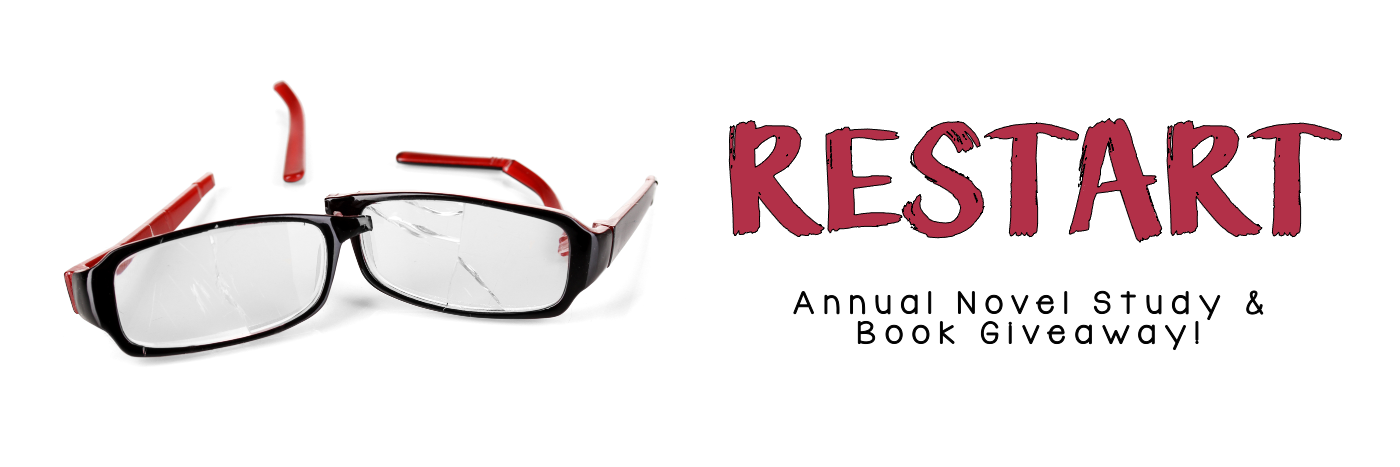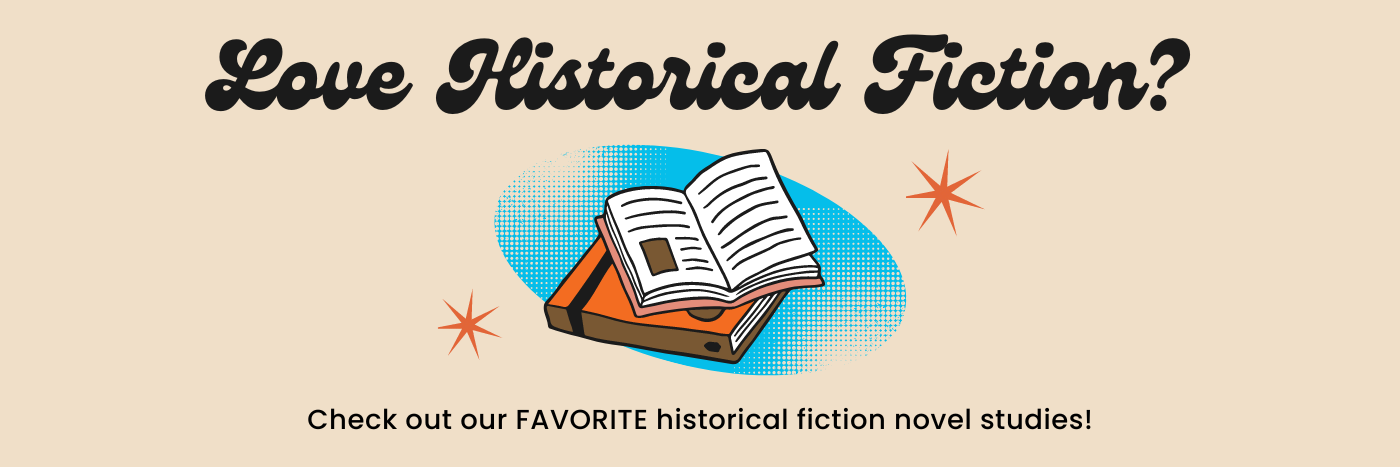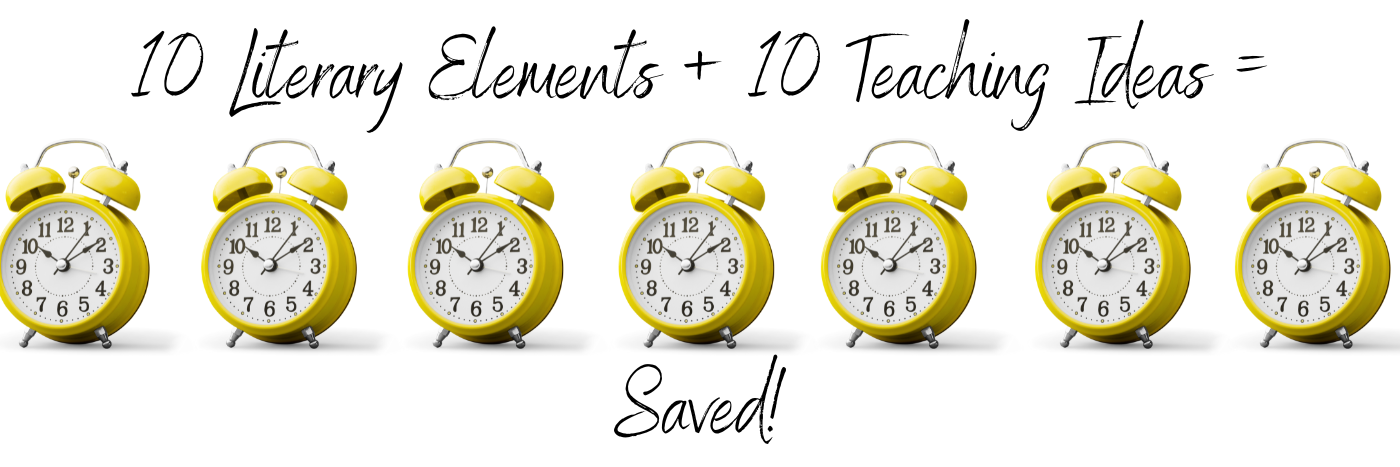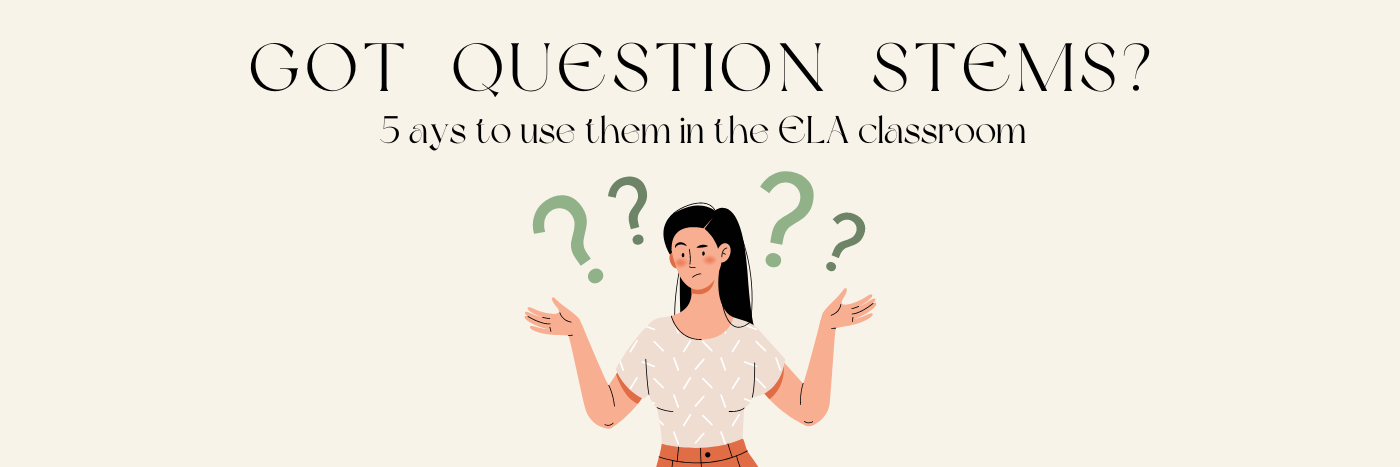
5 Ways to Use Question Stems in Reading
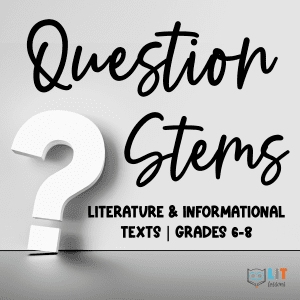 Many ELA question stem resources provide vague sentence starters or surface level prompts to encourage students to engage with a text. Oftentimes, these resources lack true depth and rigor, which means students are not being adequately challenged to critically think about a text. The 310 Question Stems resource enhances Bloom’s Taxonomy and Depth-of-Knowledge questioning to make it simple for a teacher to actually challenge their students. The key breaks down levels of challenge in an easy-to-understand way that will improve your ability to ask rigorous and meaningful questions in the ELA classroom. Below are 5 ways to use question stems in reading in order to utilize this invaluable teaching tool. Its lines of questioning will prompt critical thinking, foster rich discussions, and help create meaningful tasks. The Question Stems resource is comprehensive and flexible, and its uses extend far beyond the ideas below. You will find yourself referencing this valuable resource again and again.
Many ELA question stem resources provide vague sentence starters or surface level prompts to encourage students to engage with a text. Oftentimes, these resources lack true depth and rigor, which means students are not being adequately challenged to critically think about a text. The 310 Question Stems resource enhances Bloom’s Taxonomy and Depth-of-Knowledge questioning to make it simple for a teacher to actually challenge their students. The key breaks down levels of challenge in an easy-to-understand way that will improve your ability to ask rigorous and meaningful questions in the ELA classroom. Below are 5 ways to use question stems in reading in order to utilize this invaluable teaching tool. Its lines of questioning will prompt critical thinking, foster rich discussions, and help create meaningful tasks. The Question Stems resource is comprehensive and flexible, and its uses extend far beyond the ideas below. You will find yourself referencing this valuable resource again and again.
1 | Craft Quality Reading Questions
Have you ever read a text and got stuck on how to phrase the right question you know you want ask? You know you want to ask about the conflict, but you just can’t seem to get the wording right. The Question Stems for Literature and Informational Texts is the quintessential resource to reference for creating quality questions and saving time. Whether you are creating questions for discussion, an independent reading assignment, homework, or other classroom uses, the Question Stems resources (literature and informational text) include 310 prompts at various levels of challenge so you can get your questions just right and quickly, saving you time.
2 | Differentiate Reading Assignments
Do you barely have enough time to create reading assignments? Plus, you also have to carve out time to differentiate for your students…You need question stems that take the guesswork and time demands out of differentiation. Our resource does just that. It clearly breaks down levels of challenge so you can effectively ask the right question, in the right way, and for the right student. You’ll quickly become a differentiation pro with question stems.
3 | Create an Assessment
Do you find assessment creation challenging? Part of the difficulty in test-making comes when crafting questions that effectively measure students’ learning. The Question Stems resource helps alleviate the stress that comes with developing the right prompts. The levels of challenge breakdown segments ELA skills / standards in a way that allows you to select and modify questions to suit the purpose of your exam and meet the level of rigor you intend for students to meet. The question stems also help move away from simple recall prompts and towards questions that require students to demonstrate their knowledge of skills and standards.
4 | Encourage Student-Use
Want to make discussions and literary analysis more student-centered? Put the question stems in the hands of students (both small groups or whole class work). If you are focusing on a handful of skills / standards, provide students with the question stems for those skills / standards and let them use the prompts as a springboard for discussion. Up the challenge by requiring them to pick stems from different levels of challenge. Students love to drive discussion. They just need the chance and the tools to do so in a productive way. The stems give them a chance to direct their own learning because they can choose the question and provide the answer for it.
5 | Include in Professional Development or PLC
Need a way to norm levels of challenge in vertical content teams or PLC? The Question Stems resource is a fantastic reference or baseline for your team. When discussing differentiation and the difference between comprehension, analysis, and synthesis questions, everyone will be on the same page. The resource allows modification, which is a perfect opportunity to examine the stems and discuss how they encourage students to demonstrate their knowledge of a skill or standard and why they exist in the corresponding level of challenge. The exercise is a powerful way to talk about literacy and see how we can all raise the bar for our students to meet a higher level of critical thinking in the classroom.
More Blog Posts
It’s time for the annual LIT Lessons Novel Study Giveaway! Year-over-year students grow and change, and those changes are often most pronounced when a new school year begins. It’s a fresh start and a restart. The message of Restart by Gordon Korman captures the spirit of new beginnings, evolving identity, and the universal experience of growing older.
Middle grades historical fiction novels have come a long way from the books available ‘decades’ ago. In fact, this growing genre is now bursting with fantastic, inspiring, and insightful novels. It comes as no surprise that these books are finding their way into middle school ELA curricula…
Reading comprehension is a foundational skill students need to be successful in any class, especially English Language Arts. Yet, as students approach upper elementary grades and middle school, they must develop a new skill set when engaging with fiction texts.

